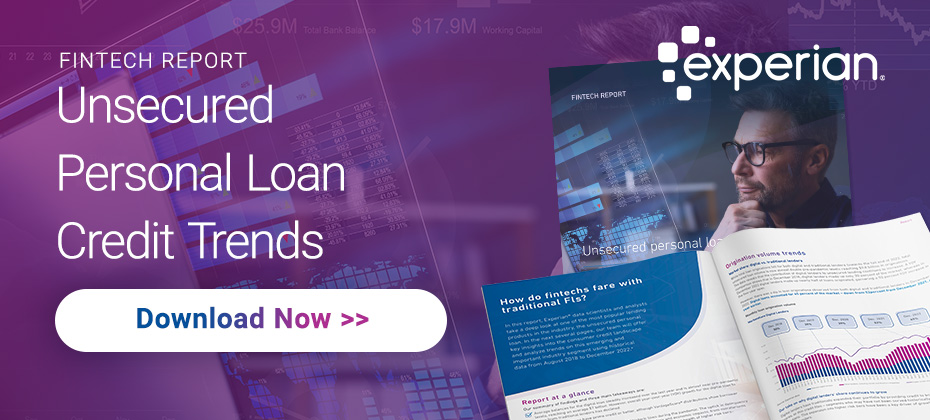Credit Lending

In a series of articles, we talk about different types of fraud and how to best solve for them. This article will explore first-party fraud and how it's similar to biting into a cookie you think is chocolate chip, only to find that it’s filled with raisins. The raisins in the cookie were hiding in plain sight, indistinguishable from chocolate chips without a closer look, much like first-party fraudsters. What is first-party fraud? First-party fraud refers to instances when an individual purposely misrepresents their identity in exchange for goods or services. Borrowers may falsify income, misrepresent employment or exploit credit systems without the intention of repaying. In the financial services industry, it's often miscategorized as credit loss and written off as bad debt, which masks true fraud exposure and distorts credit-risk forecasting. Read now: Download Experian’s latest research on first-party fraud Common types of first-party fraud include: Chargeback fraud: Also known as "friendly fraud," chargeback fraud occurs when an individual knowingly makes a purchase with their credit card and then requests a chargeback from the issuer, claiming they didn't authorize the purchase. Application fraud: This takes place when an individual uses stolen or manipulated information to apply for a loan, credit card or job. In 2023, the employment sector accounted for 45% of all false document submissions — 70% of those who falsified their resumes still got hired. Fronting: Done to get cheaper rates, this form of insurance fraud happens when a young or inexperienced individual is deliberately listed as a named driver, when they're actually the main driver of the vehicle. Goods lost in transit fraud (GLIT): This occurs when an individual claims the goods they purchased online did not arrive. To put it simply, the individual is getting a refund for something they actually already received. Bust-out: This occurs when an individual builds what appears to be good credit behavior over time, making small purchases and on-time payments, and then suddenly maxes out their credit lines or abandons repayment entirely. The account looks legitimate until the “bust-out,” making it one of the hardest forms of first-party fraud to detect. Credit washing: This happens when an individual falsely disputes legitimate accounts or debts to have them removed from their credit report. By portraying valid obligations as fraud, the individual can temporarily improve their credit standing or access new credit they wouldn’t qualify for otherwise. A first-party fraudster can also recruit “money mules” — individuals who are persuaded to use their own information to obtain credit or merchandise on behalf of a larger fraud ring. This type of fraud has become especially prevalent as more consumers are active online. Money mules constitute up to 0.3% of accounts at U.S. financial institutions, or an estimated $3 billion in fraudulent transfers. How does it impact my organization? Firstly, first-party fraud can cause significant losses. According to our latest study, first-party fraud costs $36.7 million annually on average. Nearly one-third of respondents in our annual Identity and Fraud survey reported that first-party fraud had increased stress on their businesses. An imperfect first-party fraud solution can also strain relationships with good customers and hinder growth. When lenders have to interpret actions and behavior to assess customers, there’s a lot of room for error and losses. Those same losses hinder growth when misclassification inflates credit-risk estimates and masks true fraud exposure. This type of fraud isn’t a single-time event, and it doesn’t occur at just one point in the customer lifecycle. It occurs when good customers develop fraudulent intent, when new applicants who have positive history with other lenders have recently changed circumstances or when seemingly good applicants have manipulated their identities to mask previous defaults. Finally, misclassified first-party fraud losses can impact how your organization categorizes and manages risk – and that’s something that touches every department. Solving the first-party fraud problem First-party fraud detection requires a shift in how we think about the fraud problem. It starts with the ability to separate first-party fraud and credit risk, since they are often indiscernible at origination. To effectively combat first-party fraud, businesses should consider the following actions: Define first-party fraud as its own risk: Don’t blend it into credit loss. Build targeted models that use behavioral, identity and activity signals. Start with first-payment default as a key indicator. Use a longer risk window: A 12-month view helps surface early fraud patterns and supports stronger credit and fraud analysis. Unify fraud, credit and compliance decisions: Coordinated strategies reduce blind spots and improve customer experience. Upgrade your models: Apply machine learning and segment by factors like credit age or product type to better detect bust-outs and early defaults. Combine credit and noncredit data: Use device intelligence, identity velocity and behavioral data to help separate fraud from financial hardship. Benchmark against peers: Regular comparisons help assess exposure, validate performance and refine strategies. How Experian can help As we’ve already discussed, the fraud problem is complex. However with a partner like Experian, you can leverage the fraud risk management strategies required to perform a closer examination and the ability to differentiate between the types of fraud so you can determine the best course of action moving forward. Additionally, our robust fraud management solutions can be used for synthetic identity fraud and account takeover fraud prevention, which can help you minimize customer friction to improve and deepen your relationships while preventing fraud. Contact us if you’d like to learn more about how Experian is using our identity expertise, data and analytics to improve identity resolution and detect and prevent all types of fraud. Contact us Read report Watch webinar

Model governance is growing increasingly important as more companies implement machine learning model deployment and AI analytics solutions into their decision-making processes. Models are used by institutions to influence business decisions and identify risks based on data analysis and forecasting. While models do increase business efficiency, they also bring their own set of unique risks. Robust model governance can help mitigate these concerns, while still maintaining efficiency and a competitive edge. What is model governance? Model governance refers to the framework your organization has in place for overseeing how you manage your development, model deployment, validation and usage.1 This can involve policies like who has access to your models, how they are tested, how new versions are rolled out or how they are monitored for accuracy and bias.2 Because models analyze data and hypotheses to make predictions, there's inherent uncertainty in their forecasts.3 This uncertainty can sometimes make them vulnerable to errors, which makes robust governance so important. Machine learning model governance in banks, for example, might include internal controls, audits, a thorough inventory of models, proper documentation, oversight and ensuring transparent policies and procedures. One significant part of model governance is ensuring your business complies with federal regulations. The Federal Reserve Board and the Office of the Comptroller of the Currency (OCC) have published guidance protocols for how models are developed, implemented and used. Financial institutions that utilize models must ensure their internal policies are consistent with these regulations. The OCC requirements for financial institutions include: Model validations at least once a year Critical review by an independent party Proper model documentation Risk assessment of models' conceptual soundness, intended performance and comparisons to actual outcomes Vigorous validation procedures that mitigate risk Why is model governance important — especially now? More and more organizations are implementing AI, machine learning and analytics into their models. This means that in order to keep up with the competition's efficiency and accuracy, your business may need complex models as well. But as these models become more sophisticated, so does the need for robust governance.3 Undetected model errors can lead to financial loss, reputation damage and a host of other serious issues. These errors can be introduced at any point from design to implementation or even after deployment via inappropriate usage of the model, drift or other issues. With model governance, your organization can understand the intricacies of all the variables that can affect your models' results, controlling production closely with even greater efficiency and accuracy. Some common issues that model governance monitors for include:2 Testing for drift to ensure that accuracy is maintained over time. Ensuring models maintain accuracy if deployed in new locations or new demographics. Providing systems to continuously audit models for speed and accuracy. Identifying biases that may unintentionally creep into the model as it analyzes and learns from data. Ensuring transparency that meets federal regulations, rather than operating within a black box. Good model governance includes documentation that explains data sources and how decisions are reached. Model governance use cases Below are just three examples of use cases for model governance that can aid in advanced analytics solutions. Credit scoring A credit risk score can be used to help banks determine the risks of loans (and whether certain loans are approved at all). Governance can catch biases early, such as unintentionally only accepting lower credit scores from certain demographics. Audits can also catch biases for the bank that might result in a qualified applicant not getting a loan they should. Interest rate risk Governance can catch if a model is making interest rate errors, such as determining that a high-risk account is actually low-risk or vice versa. Sometimes changing market conditions, like a pandemic or recession, can unintentionally introduce errors into interest rate data analysis that governance will catch. Security challenges One department in a company might be utilizing a model specifically for their demographic to increase revenue, but if another department used the same model, they might be violating regulatory compliance.4 Governance can monitor model security and usage, ensuring compliance is maintained. Why Experian? Experian® provides risk mitigation tools and objective and comprehensive model risk management expertise that can help your company implement custom models, achieve robust governance and comply with any relevant federal regulations. In addition, Experian can provide customized modeling services that provide unique analytical insights to ensure your models are tailored to your specific needs. Experian's model risk governance services utilize business consultants with tenured experience who can provide expert independent, third-party reviews of your model risk management practices. Key services include: Back-testing and benchmarking: Experian validates performance and accuracy, including utilizing statistical metrics that compare your model's performance to previous years and industry benchmarks. Sensitivity analysis: While all models have some degree of uncertainty, Experian helps ensure your models still fall within the expected ranges of stability. Stress testing: Experian's experts will perform a series of characteristic-level stress tests to determine sensitivity to small changes and extreme changes. Gap analysis and action plan: Experts will provide a comprehensive gap analysis report with best-practice recommendations, including identifying discrepancies with regulatory requirements. Traditionally, model governance can be time-consuming and challenging, with numerous internal hurdles to overcome. Utilizing Experian's business intelligence and analytics solutions, alongside its model risk management expertise, allows clients to seamlessly pass requirements and experience accelerated implementation and deployment. Experian can optimize your model governance Experian is committed to helping you optimize your model governance and risk management. Learn more here. References 1Model Governance," Open Risk Manual, accessed September 29, 2023. https://www.openriskmanual.org/wiki/Model_Governance2Lorica, Ben, Doddi, Harish, and Talby, David. "What Are Model Governance and Model Operations?" O'Reilly, June 19, 2019. https://www.oreilly.com/radar/what-are-model-governance-and-model-operations/3"Comptroller's Handbook: Model Risk Management," Office of the Comptroller of the Currency. August 2021. https://www.occ.treas.gov/publications-and-resources/publications/comptrollers-handbook/files/model-risk-management/pub-ch-model-risk.pdf4Doddi, Harish. "What is AI Model Governance?" Forbes. August 2, 2021. https://www.forbes.com/sites/forbestechcouncil/2021/08/02/what-is-ai-model-governance/?sh=5f85335f15cd

From science fiction-worthy image generators to automated underwriting, artificial intelligence (AI), big data sets and advances in computing power are transforming how we play and work. While the focus in the lending space has often been on improving the AI models that analyze data, the data that feeds into the models is just as important. Enter: data-centric AI. What is a data-centric AI? Dr. Andrew Ng, a leader in the AI field, advocates for data-centric AI and is often credited with coining the term. According to Dr. Ng, data-centric AI is, ‘the discipline of systematically engineering the data used to build an AI system.’1 To break down the definition, think of AI systems as a combination of code and data. The code is the model or algorithm that analyzes data to produce a result. The data is the information you use to train the model or later feed into the model to request a result. Traditional approaches to AI focus on the code — the models. Multiple organizations download and use the same data sets to create and improve models. But today, continued focus on model development may offer a limited return in certain industries and use cases. A data-centric AI approach focuses on developing tools and practices that improve the data. You may still need to pay attention to model development but no longer treat the data as constant. Instead, you try to improve a model's performance by increasing data quality. This can be achieved in different ways, such as using more consistent labeling, removing noisy data and collecting additional data.2 Data-centric AI isn't just about improving data quality when you build a model — it's also part of the ongoing iterative process. The data-focused approach should continue during post-deployment model monitoring and maintenance. Data-centric AI in lending Organizations in multiple industries are exploring how a data-centric approach can help them improve model performance, fairness and business outcomes. For example, lenders that take a data-centric approach to underwriting may be able to expand their lending universe, drive growth and fulfill financial inclusion goals without taking on additional risk. Conventional credit scoring models have been trained on consumer credit bureau data for decades. New versions of these models might offer increased performance because they incorporate changes in the economic landscape, consumer behavior and advances in analytics. And some new models are built with a more data-centric approach that considers additional data points from the existing data sets — such as trended data — to score consumers more accurately. However, they still solely rely on credit bureau data. Explainability and transparency are essential components of responsible AI and machine learning (a type of AI) in underwriting. Organizations need to be able to explain how their models come to decisions and ensure they are behaving as expected. Model developers and lenders that use AI to build credit risk models can incorporate new high-quality data to supplement existing data sets. Alternative credit data can include information from alternative financial services, public records, consumer-permissioned data, and buy now, pay later (BNPL) data that lenders can use in compliance with the Fair Credit Reporting Act (FCRA).* The resulting AI-driven models may more accurately predict credit risk — decreasing lenders' losses. The models can also use alternative credit data to score consumers that conventional models can't score. Infographic: From initial strategy to results — with stops at verification, decisioning and approval — see how customers travel across an Automated Loan Underwriting Journey. Business benefit of using data-centric AI models Financial services organizations can benefit from using a data-centric AI approach to create models across the customer lifecycle. That may be why about 70 percent of businesses frequently discuss using advanced analytics and AI within underwriting and collections.3 Many have gone a step further and implemented AI. Underwriting is one of the main applications for machine learning models today, and lenders are using machine learning to:4 More accurately assess credit risk models. Decrease model development, deployment and recalibration timelines. Incorporate more alternative credit data into credit decisioning. AI analytics solutions may also increase customer lifetime value by helping lenders manage credit lines, increase retention, cross-sell products and improve collection efforts. Additionally, data-centric AI can assist with fraud detection and prevention. Case study: Learn how Atlas Credit, a small-dollar lender, used a machine learning model and loan automation to nearly doubled its loan approval rates while decreasing its credit risk losses. How Experian helps clients leverage data-centric AI for better business outcomes During a presentation in 2021, Dr. Ng used the 80-20 rule and cooking as an analogy to explain why the shift to data-centric AI makes sense.5 You might be able to make an okay meal with old or low-quality ingredients. However, if you source and prepare high-quality ingredients, you're already 80% of the way toward making a great meal. Your data is the primary ingredient for your model — do you want to use old and low-quality data? Experian has provided organizations with high-quality consumer and business credit solutions for decades, and our industry-leading data sources, models and analytics allow you to build models and make confident decisions. If you need a sous-chef, Experian offers services and has data professionals who can help you create AI-powered predictive analytics models using bureau data, alternative data and your in-house data. Learn more about our AI analytics solutions and how you can get started today. 1DataCentricAI. (2023). Data-Centric AI.2Exchange.scale (2021). The Data-Centric AI Approach With Andrew Ng.3Experian (2021). Global Insights Report September/October 2021.4FinRegLab (2021). The Use of Machine Learning for Credit Underwriting: Market & Data Science Context. 5YouTube (2021). A Chat with Andrew on MLOps: From Model-Centric to Data-Centric AI *Disclaimer: When we refer to “Alternative Credit Data," this refers to the use of alternative data and its appropriate use in consumer credit lending decisions, as regulated by the Fair Credit Reporting Act. Hence, the term “Expanded FCRA Data" may also apply in this instance and both can be used interchangeably.

This article was updated on September 8, 2023. Prescreen, prequalification and preapproval. The terms sound similar, but lenders beware. These credit solutions are quite different, and regulations vary depending on which product is utilized. Let’s break it down… What is prescreen? Perhaps the most reliable mailbox tenant, thick envelopes splashed with “limited time offer” or other flashy designations offering various card and credit products – otherwise known as prescreen offers – are a mainstay in many households. Prescreen is a process that happens behind-the-scenes where a lender screens a consumer’s credit to determine whether to extend a firm offer of credit. The process takes place without the consumer’s knowledge and without any negative impact to their credit score. For lenders and financial institutions, credit prescreen is a way to pick and choose the criteria of the consumers you want to target for a particular offer – often in the form of better terms, interest rates or incentives. Typically, a list of consumers meeting specific credit criteria is compiled by a Credit Reporting Agency, like Experian, and then provided to the requesting lending institutions or their mailing service. In other words? Increase response rates and conversion by targeting the right consumers and eliminating unqualified prospects. Additionally, prescreening consumers also reduces high-risk accounts, targeting the best prospects to reach them at the right time with the right offer for their needs. Gone are the days of batch-and-blasting. It’s expensive and a challenge for constantly limited marketing budgets. Prescreen decreases acquisition and mailing costs by segmenting a lender’s prospect list. In one case, a lender identified more than 40 thousand loans, representing $466 million in loan growth opportunities, after using digital prescreen. Governed by the Fair Credit Reporting Act (FCRA), lenders initiating prescreen campaigns for credit products must also adhere to certain rules. What qualifies one of these campaigns? A firm offer of credit An inquiry posting is required (though it is a “soft” inquiry) Consumers also have the option to opt out of preapproved and prescreen credit offer lists In addition to acquisitions via direct mail, there are various types of prescreen tailored to the multiple channels where marketing takes place in today’s world. For example, Instant Prescreen can increase new account acquisitions by performing the preapproval process in seconds, while the customer is on your website, on the phone with you or at your business. Similar to how you might screen calls on your cell phone by letting them go to your voicemail inbox or screen candidates’ resumes before inviting them for an interview for an open position at your company, a prescreened credit offer is not much different. Focusing on your audience that is most likely to respond to your offers is an easy way to increase your ROI and should be considered a best practice when it comes to your marketing efforts. What is prequalification? Prequalification, on the other hand, is a consumer consent-based credit screening tool where the consumer opts-in to see which credit products they may be qualified for in real time at the point of contact. Unlike a prescreen which is initiated by the lender, the prequalification is initiated by the consumer. In this instance, envision a consumer visiting a bank and inquiring about whether they would qualify for a credit card. During a prequalification, the lender can explore if the consumer would be eligible for multiple credit products – perhaps a personal loan or HELOC. The consumer can then decide if they would like to proceed with the offer(s). A soft inquiry is always logged to the consumer’s credit file, and the consumer can be presented with multiple credit options for qualification. No firm offer of credit is required, but adverse action may be required, and it is up to the client’s legal counsel to determine the manner, content, and timing of adverse action. When the consumer is ready to apply, a hard inquiry must be logged to the consumer’s file for the underwriting process. With Experian’s Prequalification, you can match prospective customers with the right loan products at the point of contact, allowing you to increase approval rates and ROI. How will a prequalification or prescreen invitation/offer impact a consumer’s credit report? Inquiries generated by prequalification offers will appear on a consumer’s credit report. For “soft” inquiries, in both prescreen and prequalification instances, there is no impact to the consumer’s credit score. However, once the consumer elects to proceed with officially applying for and/or accepting a new line of credit, the hard inquiry will be noted in the consumer’s report, and the credit score may be impacted. Typically, a hard inquiry subtracts a few points from a consumer’s credit score, but only for a year, depending on the scoring model. Learn more about Prescreen | Learn more about Prequalification

In the fast-paced world of lending and financial services, digital income verification processes play a crucial role in assessing customer eligibility and mitigating risk. However, not all verification methods are created equal. Let's delve into the differences between instant, permissioned, and manual income and employment verification, and their unique characteristics, benefits, and drawbacks. Instant verification: Real-time insights for seamless decision-making Instant employment and income verification is a game-changer in the lending industry. It provides immediate insights into a customer's financial information, allowing lenders to make real-time decisions. This real-time access to data streamlines the decision-making process, enabling lenders to deliver a seamless and frictionless customer experience. The advantages of instant employment and income verification include: Speed and efficiency: Instant verification eliminates the time-consuming process of manually gathering and analyzing data. This enables lenders to expedite loan approvals, reducing customer waiting times significantly. Enhanced user experience: By delivering real-time results, instant verification enhances the overall customer experience. Customers can complete their applications quickly and effortlessly, leading to increased satisfaction and higher conversion rates. Reduced risk: Real-time verification allows lenders to assess applicant information promptly, maintaining the security and integrity of lending processes. Permissioned verification: Empowering customers in their digital experience Permissioned verification gives customers the ability to grant access to their financial information directly from their payroll or bank accounts. This method is valuable because it keeps customers within their digital experience, eliminating the need for manual document submission or authentication. The benefits of permissions verification include: Convenience and speed: By granting permissioned access, customers can automate income verification and avoid the hassle of uploading or submitting pay stubs manually. This saves time and effort, resulting in a faster verification process. Increased coverage and reduced abandonment: Permissioned verification ensures a higher coverage rate by minimizing the potential for customer abandonment during the application process. Since the information is retrieved seamlessly, customers are more likely to complete the application without frustration. Privacy and control: Customers retain control over their data by explicitly granting permission for access. This enhances transparency and empowers individuals to manage their financial information securely. Manual Verification: A last resort with high friction Manual verification is a traditional method that involves time-consuming and costly processes. It requires lenders to manually collect, review, and verify documents provided by the customer. This method should be reserved as a last-ditch effort when instant and permissioned verification options are not feasible. There are several drawbacks to manual verification, including: Time-consuming: Manual verification involves significant manual labor, which leads to longer processing times. This delays loan approvals and can negatively impact the customer experience. High cost: The labor-intensive nature of manual verification incurs higher operational costs for lenders. These costs can potentially trickle down to customers in the form of higher fees. Increased friction: Customers must go through the inconvenience of gathering and submitting physical documents, potentially hindering the overall loan application process. Level-up your verification experience The differences between instant, permissioned, and manual verification are important to understand. As technology continues to evolve, instant and permissioned verification methods are poised to become the norm, transforming lending processes and fostering greater efficiency and customer satisfaction. Lenders must embrace these innovative verification methods to stay ahead in the competitive financial landscape and provide an exceptional digital income verification experience for their customers. To learn how Experian can help you transform your verification experience, visit us as experian.com/verify. *This content has been created by an AI language model and is intended to provide general information.

Investing in a strong customer acquisition strategy is critical to attracting leads and converting them into high-value customers. In this blog post, we’ll be focusing on one of the first stages of the customer acquisition process: the application stage. Challenges with online customer application processes When it comes to the customer application stage, speed, ease, and convenience are no longer nice-to-haves — they are musts. But various challenges exist for lenders and consumers in terms of online credit or account application processes, including: Limited digital capabilities. Consumers have grown more reliant on digital channels, with 52% preferring to use digital banking options over banking at branches. That said, financial institutions should prioritize the digital customer experience or risk falling behind the competition. The length of applications. Whether it’s a physical or digital application, requiring consumers to provide a substantial amount of information about themselves and their past can be frustrating. In fact, 67% of consumers will abandon an application if they experience complications. Potential human error. Because longer, drawn-out applications require various steps and data inputs, consumers may leave fields blank or make errors along the way. This can create more friction and delays as consumers may potentially be driven offline and into branches to get their applications sorted out. Improve the speed and accuracy of online credit applications Given that consumers are more likely to abandon their applications if their experience is friction-filled, financial institutions will need an automated, data-driven solution to simplify and streamline the online form completion process. Some of the benefits of leveraging an automated solution include: Improved customer experiences. Shortening time-to-value starts with faster decisioning. By using accurate consumer data and automation to prefill parts of the online credit application, you can reduce the amount of information applicants are required to enter, leading to lower abandonment rates, less potential for manual error, and enhanced user experiences. Fraud prevention. Safeguarding consumer information throughout the credit application process is crucial. By leveraging intelligent identity verification solutions, you can securely and compliantly identify consumer identities while ensuring data isn’t released in risky situations. Then by using identity management solutions, you can gain a connected, validated customer view, resulting in minimized end-user friction. Faster approvals. With automated data prefill and identity verification, you can process applications more efficiently, leading to faster approvals and increased conversions. Choosing the right partner Experian can help optimize your customer application process, making it faster, more efficient, and less error prone. This way, you can win more customers and improve digital experiences. Learn more about Experian’s customer acquisition solutions.

It's no secret that the banking industry is essential to a thriving economy. However, the nature of the industry makes it prone to various risks that can have significant consequences. Therefore, effective and efficient risk management is vital for mitigating these risks and enhancing the stability of the banking sector. This is where risk management in banking comes in. Let’s look at the importance of risk management in banking and its role in mitigating risks in the industry. What is risk management in banking? Risk management in banking is an approach used by financial institutions to manage risks associated with banking operations. Establishing a structured risk management process is essential to identifying, evaluating and controlling risks that could affect your operations. The process involves developing and implementing a comprehensive risk management framework consisting of several components, including risk assessment, mitigation, monitoring and reporting. Importance of banking risk management Banks face risks from every angle – changing customer behaviors, fraud, uncertain markets, and regulatory compliance, making banking risk management critical for the stability of financial institutions. There are various risks associated with the industry, including: Credit risk: The probability of a financial loss resulting from a borrower's failure to repay a loan, which results in an interruption of cash flows and increased costs for collection. How to mitigate: Leverage advanced analytics, data attributes, and predictive models to improve predictability, manage portfolio risk, make better decisionsand acquire the best customers. Market risk:The likelihood of an investment decreasing in value because of market factors (I.e., changes in interest rates, geopolitical events or recessions). How to mitigate: While it is impossible to eliminate market risk, you can diversify your assets, more accurately determine your risk threshold and stay informed on economic and market conditions. Liquidity risk:The risk that an organization cannot meet its short-term liabilities and financial payment obligations. How to mitigate: More regularly forecast your cash flow and conduct stress tests to determine potential risk scenarios that would cause a loss of liquidity and how much liquidity would be lost in each instance. Operational risk:Potential sources of losses that result from inadequate or failed internal processes (I.e., poorly trained employees, a technological breakdown, or theft of information). How to mitigate: Hire the right staff and adequately train them, stay up to date with cybersecurity threats and automate processes to reduce human error. Reputational risk: The potential that negative publicity regarding business practices, whether true or not, will cause a decline in the customer base, costly litigation or revenue reductions. How to mitigate: Define your bank’s core ethical values and relay them to stakeholders and employees. You should also develop a reputational management strategy and contingency plan in case a reputation-affecting incident occurs. Risk management in banking best practices Successful banks embrace risks while developing powerful mechanisms to prevent or manage them and stay ahead. By taking a proactive approach and leveraging risk management tools, you can minimize losses, enhance stability and grow responsibly. The steps for implementing a banking risk management plan, include: Risk identification and assessment: Financial institutions need to identify potential risks associated with their operations and assess the severity and impact of these risks. Risk mitigation: Once risks have been identified and assessed, financial institutions can implement strategies to mitigate the effects of these risks. There are several strategies for risk mitigation, including risk avoidance, reduction, acceptance and transfer. Risk monitoring and reporting: One of the fundamental principles of a banking risk management strategy is ongoing monitoring and reporting. Financial institutions should continually monitor their operations to identify evolving risks and develop mitigation strategies. Generating reports about the progress of the risk management program gives a dynamic view of the bank’s risk profile and the plan’s effectiveness. Several challenges may arise when implementing a risk management strategy. These include new regulatory rules or amendments, cybersecurity and fraud threats, increased competition in the sector, and inefficient resources and processes. An effective risk management plan serves as a roadmap for improving performance and allows you to better allocate your time and resources toward what matters most. Benefits of implementing a risk management strategy Banks must prioritize risk management to stay on top of the various critical risks they face every day. There are several benefits of taking a proactive approach to banking risk management, including:Improved efficiency: Enhance efficiency and deploy more reliable operations by identifying areas of weakness or inefficiencies in operational processes.Confident compliance: Ensure you comply with new and amended regulatory requirements and avoid costly fines. Enhanced customer confidence: Foster customer confidence to increase customer retention and mitigate reputational risk. Partnering to reduce risk and maximize growth Effective risk management is crucial for mitigating risks in the banking industry. By implementing a risk management framework, financial institutions can minimize losses, enhance efficiency, ensure compliance and foster confidence in the industry. At Experian, we have a team of experts dedicated to supporting our banking partners. Our team’s expertise paired with our innovative solutions can help you implement a powerful risk management process, as well as: Leverage data to reach company-wide business goals. Lower the cost of funds by attracting and retaining deposits. Protect your business against fraud and risk. Create less friction through automated decisioning. Grow your business portfolio and increase profitability. Learn more about our fraud and risk management solutions for banks. Learn more

Evolving technologies and rising consumer expectations for fast, frictionless experiences highlight an opportunity for credit unions to advance their decisioning and stand out in a crowded market. How a credit union is optimizing their decision-making process With over $7.2 billion in assets and 330,000 members, Michigan State University Federal Credit Union (MSUFCU) aims to provide superior service to their members and employees. Initially reliant on manual reviews, the credit union needed a well-designed decisioning strategy that could help them grow their loan portfolio, increase employee efficiency, and reduce credit risk. The credit union implemented Experian’s decisioning platform, PowerCurve® Originations, to make faster, more accurate credit decisions on their secured and unsecured personal loans, leading to increased approvals and an exceptional member experience. “Day one of using PowerCurve produced a 49% automation rate! We have received amazing feedback from our teams about what a great product was chosen,” said Blake Johnson, Vice President of Lending, Michigan State University Federal Credit Union. After implementing PowerCurve Originations, MSUFCU saw an average monthly automation rate of more than 55% and decreased their application processing time to less than 24 hours. Read the full case study for more insight on how Experian can help power your decisioning to grow your business and member relationships. Download case study

More than half of U.S. businesses say they discuss fraud management often, making fraud detection in banking top-of-mind. Banking fraud prevention can seem daunting, but with the proper tools, banks, credit unions, fintechs, and other financial institutions can frustrate and root out fraudsters while maintaining a positive experience for good customers. What is banking fraud? Banking fraud is a type of financial crime that uses illegal means to obtain money, assets, or other property owned or held by a bank, other financial institution, or customers of the bank. This type of fraud can be difficult to detect when misclassified as credit risk or written off as a loss rather than investigated and prevented in the future. Fraud that impacts financial institutions consists of small-scale one-off events or larger efforts perpetrated by fraud rings. Not long ago, many of the techniques utilized by fraudsters required in-person or phone-based activities. Now, many of these activities are online, making it easier for fraudsters to disguise their intent and perpetrate multiple attacks at once or in sequence. Banking fraud can include: Identity theft: When a bad actor steals a consumer’s personal information and uses it to take money, open credit accounts, make purchases, and more. Check fraud: This type of fraud occurs when a fraudster writes a bad check, forges information, or steals and alters someone else’s check. Credit card fraud: A form of identity theft where a bad actor makes purchases or gets a cash advance in the name of an unsuspecting consumer. The fraudster may takeover an existing account by gaining access to account numbers online, steal a physical card, or open a new account in someone else’s name. Phishing: These malicious efforts allow scammers to steal personal and account information through use of email, or in the case of smishing, through text messages. The fraudster often sends a link to the consumer that looks legitimate but is designed to steal login information, personally identifiable information, and more. Direct deposit account fraud: Also known as DDA fraud, criminals monetize stolen information to open new accounts and divert funds from payroll, assistance programs, and more. Unfortunately, this type of fraud doesn’t just lead to lost funds – it also exposes consumer data, impacts banks’ reputations, and has larger implications for the financial system. Today, top concerns for banks include generative AI (GenAI) fraud, peer-to-peer (P2P) payment scams, identity theft and transaction fraud. Without the proper detection and prevention techniques, it’s difficult for banks to keep fraudsters perpetrating these schemes out. What is banking fraud prevention? Detecting and preventing banking fraud consists of a set of techniques and tasks that help protect customers, assets and systems from those with malicious intent. Risk management solutions for banks identify fraudulent access attempts, suspicious transfer requests, signs of false identities, and more. The financial industry is constantly evolving, and so are fraudsters. As a result, it’s important for organizations to stay ahead of the curve by investing in new fraud prevention technologies. Depending on the size and sophistication of your institution, the tools and techniques that comprise your banking fraud prevention solutions may look different. However, every strategy should include multiple layers of friction designed to trip up fraudsters enough to abandon their efforts, and include flags for suspicious activity and other indicators that a user or transaction requires further scrutiny. Some of the emerging trends in banking fraud prevention include: Use of artificial intelligence (AI) and machine learning (ML). While these technologies aren’t new, they are finding footing across industries as they can be used to identify patterns consistent with fraudulent activity – some of which are difficult or time-consuming to detect with traditional methods. Behavioral analytics and biometrics. By noting standard customer behaviors — e.g., which devices they use and when — and how they use those devices — looking for markers of human behavior vs. bot or fraud ring activity — organizations can flag riskier users for additional authentication and verification. Leveraging additional data sources. By looking beyond standard credit reports when opening credit accounts, organizations can better detect signs of identity theft, synthetic identities, and even potential first-party fraud. With real-time fraud detection tools in place, financial institutions can more easily identify good consumers and allow them to complete their requests while applying the right amount and type of friction to detect and prevent fraud. How to prevent and detect banking fraud In order to be successful in the fight against fraud and keep yourself and your customers safe, financial institutions of all sizes and types must: Balance risk mitigation with the customer experience Ensure seamless interactions across platforms for known consumers who present little to no risk Leverage proper identity resolution and verification tools Recognize good consumers and apply the proper fraud mitigation techniques to riskier scenarios With Experian’s interconnected approach to fraud detection in banking, incorporating data, analytics, fraud risk scores, device intelligence, and more, you can track and assess various activities and determine where additional authentication, friction, or human intervention is required. Learn more

Credit risk refers to the likelihood that a borrower will fail to repay a debt as agreed. Credit risk management is the art and science of utilizing risk mitigation tools to minimize losses while maximizing profits from lending activities. Lenders can establish credit underwriting criteria for each of their products and utilize risk-based pricing to adjust the terms of a loan or line of credit based on the risk associated with the product and borrower. Credit portfolio management extends beyond originations and individual decisions to encompass portfolios as a whole. Why is credit risk management important? Continuously managing credit risk matters because there's always a balancing act. Tightening a credit box – using more restrictive underwriting criteria – might reduce credit losses. However, it can also decrease approval rates, excluding borrowers who would have repaid as agreed. Expanding a credit box might increase approval rates, but it is only beneficial if the profit from good new loans exceeds credit losses. Fraud is also on the rise and becoming increasingly complex, making fraud management a crucial part of understanding risk. For instance, with synthetic identity fraud, fraudsters might “age an account" or make on-time payments before “busting out” or maxing out a credit card, and then abandoning the account. If you examine payment activity alone, it may be challenging to classify the loss as either a fraud loss or a credit loss. Additionally, external economic forces and consumer behavior are constantly in flux. Financial institutions need effective consumer risk management and to adjust their strategies to minimize losses. And they must dynamically adjust their underwriting criteria to account for these changes. You could be pushed off balance if you don't react in time. What does managing credit risk entail? Lenders have used the five C’s of credit to measure credit risk and make lending decisions for decades: Character: The likelihood a borrower will repay the loan as agreed, often measured by analyzing their credit report and a credit risk score. Capacity: The borrower's ability to pay, which lenders might measure by reviewing their outstanding debt, income, and debt-to-income ratio. Capital: The borrower's commitment to the purchase, such as their down payment when buying a vehicle or home. Collateral: The value of the collateral, such as a vehicle or home, for an auto loan or mortgage. Conditions: The external conditions that can impact a borrower's ability to afford payments, such as broader economic trends. Credit risk management considers these within the context of a lender’s goals and its specific lending products. For example, capital and collateral aren't relevant for unsecured personal loans, which makes character and capacity the primary drivers of a decision. Credit risk management best practices at origination Advances in analytics, computing power and real-time access to additional data sources are helping lenders better measure some of the C’s. For example, credit risk scores can more precisely assess character for a lender's target market than generic risk scores. Open banking data enables lenders to more accurately assess a borrower's capacity by directly analyzing their cash flows. With these advances in mind, leading lenders: View underwriting as a dynamic process: Lenders have always had to respond to changing forces, and the pandemic highlighted the need to be nimble. Consider how you can utilize analytical insights to quickly adjust your strategies. Test the latest credit risk modeling techniques: Artificial intelligence (AI) and machine learning (ML) techniques can improve credit risk model performance and drive automated credit risk decisioning. Use multiple data sources: Alternative credit data and consumer-permissioned data offer increased and real-time visibility into borrowers' creditworthiness to help lenders more accurately assess credit risk. These additional data sources can score those who are unscoreable by conventional models and help fuel ML credit risk models. Experian helps lenders measure and manage credit risk Experian is a leading provider of traditional credit data, alternative credit data and credit risk analytics. For those who want to quickly benefit from the latest technological advancements, our Lift Premium credit risk model utilizes both traditional and alternative data to score up to 96 percent of U.S. consumers — compared to the 81 percent that conventional models can score.¹ Experian’s Ascend Platform and Ascend Intelligence Services™ can help lenders develop, deploy and monitor custom credit risk models to optimize their decisions. With end-to-end platforms, our account and portfolio management services can help you limit risk, detect fraud, automate underwriting and identify opportunities to grow your business. Learn more about credit risk management ¹Experian (2023). Lift Premium™ and Lift Plus™

In a changing economy, banks of all sizes are more budget conscious, leading many to pull back on their marketing spend for new customer acquisition. But by making strategic marketing moves now, banks can uncover new opportunities and drive profitable, long-term growth. So, how can you find, engage, and win over high-value customers? Know who’s in the market for credit To build an effective bank customer acquisition strategy, you’ll want to be proactive with your campaign planning. Let’s say you’ve already defined your customer profile and have insights into their interests, lifestyles, and demographics. With predictive metrics and advanced tools like trended data and propensity-to-open models, you can further refine your segmentation strategies by identifying individuals who are likely to be in the market for your product. This way, you can reach consumers at the right time and personalize offers to achieve higher open rates. Embrace the digital era With today’s consumers increasing their banking activities online, leveraging digital channels in your bank customer acquisition strategy is imperative. In addition to connecting with consumers through direct mail, consider reaching out to them through email, social media, or your mobile banking applications. This will not only help increase the visibility of the offer, but also allow consumers to receive and respond faster. Another way to enhance your banking strategies for growth while meeting consumer expectations for digital is by making it easier and more convenient for consumers to onboard. With an automated and data-driven credit decisioning solution, you can streamline steps that are traditionally manual and time-consuming, such as data collection and identity verification. By providing seamless customer acquisition in banking, you can accelerate your decision-making and increase the likelihood of conversion. Make the most of your marketing spend While customer acquisition in banking should remain a high priority, we understand that driving growth on a tight marketing budget can be challenging. That’s why we created a tip sheet outlining ways for banks and other lenders to enhance their customer acquisition processes while effectively managing costs. Some of the tips include: Going beyond conventional scoring methods. By leveraging an advanced customer acquisition solution, you can gain a holistic view of your prospective customers to enhance predictive performance and identify hidden growth opportunities. Focusing on high-potential customers. Pinpointing consumers who are actively seeking credit enables you to focus your offers and resources on those who are likely to respond, resulting in a greater return on marketing investment. Amplifying your credit offers. Re-presenting preapproved credit offers through the digital channels that consumers most frequent enables you to expand your campaign reach, increase response rates, and reduce direct mailing costs. View the tip sheet to learn how you can make the most of your marketing budget to acquire new customers and drive long-term growth. Access tip sheet

Credit portfolio management has often involved navigating uncertainty, but some periods are more extreme than others. With the right data and analytics you can gain deeper insight into financial behaviors and risk to make better decisions and drive profitable growth. Along with access to an increasing amount of data, advanced analytics can help lenders more accurately: Forecast losses under different economic scenarios to estimate liquidity requirements. Identify fraud by detecting behaviors that could indicate identity theft, account takeover fraud, first-party or synthetic identity fraud. Incorporate real-time and alternative data,1 such as cash flow transaction data and specialty bureau data, in decisioning and scoring to accurately assess creditworthiness and expand your lending pool without taking on undue risk. Precisely segment consumers using internal and external data to increase automation during underwriting and identify cross-sell opportunities. Improve collections using AI-driven strategies and automated debt collection software to enhance operations and increase recovery rates. It’s imperative to take a proactive approach to portfolio monitoring. Monthly portfolio reviews with bureau scores, credit attributes and specialized scores — and using the results to manage credit lines and loan terms — are critical during volatile times. View our interactive e-book for the latest economic and consumer trends and learn how to set your portfolio up to succeed in any economic cycle. Download e-book 1"Alternative credit data" refers to the use of alternative data and its appropriate use in consumer credit lending decisions, as regulated by the Fair Credit Reporting Act. Hence, the term “expanded FCRA data" may also apply in this instance, and both can be used interchangeably.

The unsecured personal loan, one of the most popular products in the financial space, has seen ebbs and flows over the last several years due to many factors, including economic volatility, the global pandemic, changing consumer behaviors and expectations, and more. Experian data scientists and analysts took a deep dive into data between 2018 and 2022 to uncover and analyze trends in this important industry segment. Additionally, they recommend fintech lending solutions to help fintechs stay ahead of ever-changing market conditions and discover new opportunities. This analysis shows that digital loans accounted for 45 percent of the market in 2022. While this is down from 52% in 2021, digital loan market share continues to grow. The analysis also provides a detailed look into who the digital borrower is and how they compare to traditional borrowers. As we look to the rest of 2023 and beyond, fintechs must be armed with the best digital lending technology, tools, and data to fuel profitable growth while mitigating as much risk as possible. Download our fintech trends report for a full analysis on origination volume trends, delinquency trends, and consumer behavior insights. Download now

Every data-driven organization needs to turn raw data into insights and, potentially, foresight. There was a time when lack of data was a hindrance, but that's often no longer the case. Many organizations are overwhelmed with too much data and lack clarity on how to best organize or use it. Modern business intelligence platforms can help. And financial institutions can use business intelligence analytics to optimize their decisioning and uncover safe growth opportunities. What is business intelligence? Business intelligence is an overarching term for the platforms and processes that organizations use to collect, store, analyze and display data and information. The ability to go from raw data to useful insights and foresight presents organizations with a powerful advantage, and can help them greatly improve their operations and efficiencies. Let’s pause and break down the below terms before expanding on business intelligence. Data: The raw information, such as customers' credit scores. Many organizations collect so much data that keeping it all can be an expensive challenge. Access to new types of data, such as alternative credit data, can assist with decisioning — but additional data points are only helpful if you have the resources or expertise to process and analyze them.Information: Once you process and organize data points, you can display the resulting information in reports, dashboards, and other visualizations that are easier to understand. Therefore, turning raw data into information. For example, the information you acquire might dictate that customers with credit scores over 720 prefer one of your products twice as much as your other products.Insight: The information tells you what happened, but you must analyze it to find useful and actionable insights. There could be several reasons customers within a specific score band prefer one product over another, and insights offer context and help you decide what to do next. In addition, you could also see what happened to the customers who were not approved.Foresight: You can also use information and insights to make predictions about what can happen or how to act in the future given different scenarios. For example, how your customers' preferences will likely change if you offer new terms, introduce a new product or there's a large economic shift. Business intelligence isn't new — but it is changing. Traditionally, business intelligence heavily relied on IT teams to sift through the data and generate reports, dashboards and other visualizations. Business leaders could ask questions and wait for the IT team to answer the queries and present the results. Modern business intelligence platforms make that process much easier and offer analytical insights. Now even non-technical business leaders can quickly answer questions with cloud-based and self-service tools. Business intelligence vs. business intelligence analytics Business intelligence can refer to the overall systems in place that collect, store, organize and visualize your data. Business intelligence tends to focus on turning data into presentable information and descriptive analytics — telling you what happened and how it happened. Business intelligence analytics is a subset of business intelligence that focuses on diagnostics, predictive and prescriptive analytics. In other words, why something happened, what could happen in the future, and what you should do. Essentially, the insights and foresight that are listed above. How can modern business intelligence benefit lenders? A business intelligence strategy and advanced analytics and modeling can help lenders precisely target customers, improve product offerings, streamline originations, manage portfolios and increase recovery rates. More specifically, business intelligence can help lenders uncover various trends and insights, such as: Changes in consumers' financial health and credit behavior.How customers' credit scores migrate over time.The risk performance of various portfolios.How product offerings and terms compare to competitors.Which loans are they losing to peers?Which credit attributes are most predictive for their target market? Understanding what's working well today is imperative. But your competitors aren't standing still. You also need to monitor trends and forecast the impact — good or bad — of various changes. WATCH: Webinar: Using Business Intelligence to Unlock Better Lending Decisions Using business intelligence to safely grow your portfolio Let's take a deeper dive into how business intelligence could help you grow your portfolio without taking on additional risk. It's an appealing goal that could be addressed in different ways depending on the underlying issue and business objective. For example, you might be losing loans to peers because of an acquisition strategy that's resulting in declining good customers. Or, perhaps your competitors' products are more appealing to your target customers. Business intelligence can show you how many applications you received, approved, and booked — and how many approved or declined applicants accepted a competitor's offer. You can segment and analyze the results based on the applicant’s credit scores, income, debt-to-income, loan amounts, loan terms, loan performance and other metrics. An in-depth analysis might highlight meaningful insights. For example, you might find that you disproportionately lost longer-term loans to competitors. Perhaps matching your competitors' long-term loan offerings could help you book more loans. READ: White paper: Getting AI-driven decisioning right in financial services Experian's business intelligence analytics solutions Lenders can use modern business intelligence platforms to better understand their customers, products, competitors, trends, and the potential impact of shifting economic circumstances or consumer behavior. Experian's Ascend Intelligence Services™ suite of solutions can help you turn data points into actionable insights. Ascend Intelligence Services™ Acquire Model: Create custom machine learning models that can incorporate internal, bureau and alternative credit data to more accurately assess risk and increase your lending universe.Ascend Intelligence Services™ Acquire Strategy: Get a more granular view of applicants that can help you improve segmentation and increase automation.Ascend Intelligence Services™ Pulse: A model and strategy health dashboard that can help you proactively identify and remediate issues and nimbly react to market changes.Ascend Intelligence Services™ Limit: Set and manage credit limits during account opening and when managing accounts to increase revenue and mitigate risk.Ascend Intelligence Services™ Foresight: A modern business intelligence platform that offers easy-to-use tools that help business leaders make better-informed decisions. Businesses can also leverage Experian's industry-leading data assets and expertise with various types of project-based and ongoing engagements. Learn more about how you can implement or benefit from business intelligence analytics.

On average, the typical global consumer owns three or more connected devices.1 80% of consumers bounce between devices, while 31% who turned to digital channels for their last purchase used multiple devices along the way.2 Considering these trends, many lenders are leveraging multiple channels in addition to direct mail, including email and mobile applications, to maximize their credit marketing efforts. The challenge, however, is effectively engaging consumers without becoming overbearing or inconsistent. In this article, we explore what identity resolution for credit marketing is and how the right identity tools can enable financial institutions to create more cohesive and personalized customer interactions. What is identity resolution? Identity resolution connects unique identifiers across touchpoints to build a unified identity for an individual, household, or business. This requires an identity graph, a proprietary database that collects, stitches, and stores identifiers from digital and offline sources. As a result, organizations can create a persistent, high-definition customer view, allowing for more consistent and meaningful brand experiences. What are the types of identity resolution? There are two common approaches to identity resolution: probabilistic ID matching and deterministic ID matching. Probabilistic ID matching uses multiple algorithms and data sets to match identity profiles that are most likely the same customer. Data points used in probabilistic models include IP addresses and device types. Deterministic ID matching uses first-party data that customers have produced, enabling you to merge new data with customer records and identify matches among existing identifiers. Examples of this type of data include phone numbers and email addresses. What role does identity resolution play in credit marketing? Maintaining a comprehensive customer view is crucial to credit marketing — the insights gained allow lenders to determine who they should engage and the type of offer or messaging that would resonate most. But there are many factors that can prevent financial institutions from doing this effectively: poor data quality, consumers bouncing between multiple devices, and so on. Seven out of 10 consumers find it important that companies they interact with online identify them across visits. Identity resolution for credit marketing solves these issues by matching and linking customer data from disparate sources back to a single profile. This enables lenders to: Create highly targeted campaigns. If your data is incomplete or inaccurate, you may waste your marketing spend by engaging the wrong audience or sending out irrelevant credit offers. An identity resolution solution that leverages expansive, regularly updated data gives you access to high-definition views of individuals, resulting in more personalization and greater campaign engagement. Deliver seamless, omnichannel experiences. To further improve your credit marketing efforts, you’ll need to keep up with consumers not only as their needs or preferences change, but also as they move across channels and devices. Instead of creating multiple identity profiles for the same person, identity resolution can recognize an individual across touchpoints, allowing you to create consistent offers and cohesive experiences. Picking the right marketing identity resolution solution While the type of identity resolution for marketing solution can vary depending on your business’s goals and challenges, Experian can help you get started. To learn more, visit us today. 1 Global number of devices and connections per capita 2018-2023, Statista. 2 Cross Device Marketing - Statistics and Trends, Go-Globe.